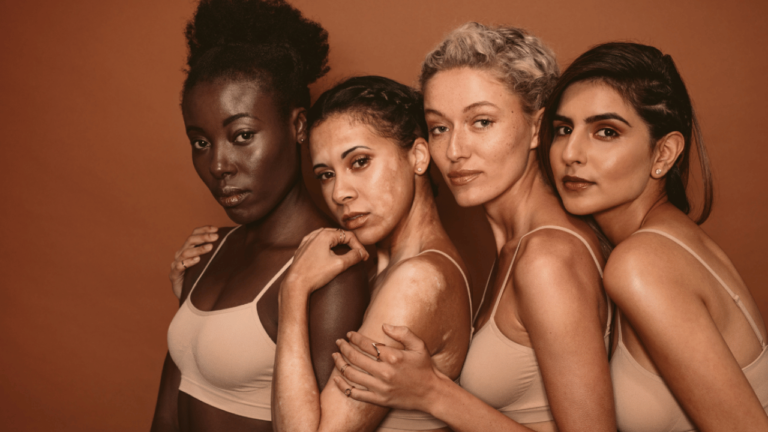Global Beauty: How Diverse Standards and Treatments Shape the Beauty World.
Beauty is diverse, fluid, and deeply rooted in cultural nuances. Across the globe, different societies have unique standards, treatments, and rituals that define their beauty ideals. As we delve into the world’s beauty landscape, we discover not just varying standards, but also the pioneering contributions each nation offers to the world of skincare and cosmetics.
1. South Korea
Leading the way in the global beauty business, South Korea created some of the most cutting-edge skincare and makeup techniques. A youthful, glowing complexion—often referred to as “glass skin” is smooth, nearly translucent appearance. This is how beauty is valued by the Korean beauty standard. This goal is accomplished with an exacting skincare routine that can consist of ten steps or more. The routine has an emphasis on hydration, nourishment, and careful sun protection. Products with active components like hyaluronic acid and snail mucin, like ampoules, serums, and essence, are essential. The burgeoning skincare sector, which produces cushion compacts, sheet masks, and BB creams with the dual goals of improving skin health and offering flawless coverage, is a reflection of the culture’s concern with skincare. The globalization of Korean pop culture has contributed to the rise of the K-beauty craze, which emphasizes a holistic approach to beauty that combines skincare with lifestyle decisions.
2. India
India’s beauty standards are closely linked to its rich cultural traditions and history, with a strong emphasis on the age-old Ayurvedic knowledge. The foundation of this holistic approach to health and beauty is the harmony of the body, mind, and spirit. It promotes the use of organic materials and age-old customs to enhance beauty from the inside out. Due to their well-known curative and cleansing qualities, Indian beauty treatments frequently include ingredients like sandalwood, and turmeric. Ghee for skin and coconut oil for hair are two age-old remedies that are still widely used today, highlighting natural wellness and nourishment. Applying kohl or kajal on the eyes has long been a beauty ritual, representing the power and mystique of Indian women. These customs prioritize maintaining the link to nature and ancestors’ wisdom over only outward appearance.
3. Brazil
Brazil’s colorful and varied culture, which places a great focus on natural augmentation and body confidence, is what defines its attitude to beauty. The Brazilian beauty ideal emphasizes bright, sun-kissed complexion in addition to a healthy, toned physique. Due to this, there is a growing need for aesthetic procedures and body-contouring treatments that complement the beach-focused lifestyle of the nation. Like the Keratin treatment, Brazilian hair treatments are well-known throughout the world for their ability to turn unruly hair into sleek, controllable locks. Brazil’s great biodiversity is highlighted by the use of regional components in beauty products, such as Brazilian almonds and açai berries. The diversity of Brazilian society is reflected in the beauty scene, which accepts people of diverse ethnicities and body shapes.
4. Japan
Japanese beauty standards are centered on elegance, simplicity, and purity. The goal is to keep the complexion flawless and pale, sometimes called “porcelain skin.” Japanese skincare routines, which comprise several procedures like cleaning, toning, moisturizing, and specific sun protection, are well known for their emphasis on prevention and careful maintenance. Seaweed, rice water, and green tea are preferred ingredients because of their mild effectiveness and inherent health advantages. Japanese bathing customs include hot springs, and public baths, which are essential for both skincare and relaxation. Beyond appearances, the Japanese concept of beauty embodies harmony, respect, and a close relationship with the natural world.
5. Nigeria
In Nigeria, brilliant cosmetics, elaborate haircuts, and colorful clothing are ways that people celebrate their individuality and cultural history. Nigerians have strong, inclusive ideals of beauty that embrace a wide range of body forms, skin tones, and facial traits. Vibrant lip colors and dramatic eye makeup are reflections of a society that encourages individuality and resiliency. In addition to being a cosmetic technique, hairstyling—particularly braiding and threading—is a way for cultures to express themselves, with many styles having deeper symbolic implications. Because of its healing and moisturizing qualities, shea butter, which comes from the African shea tree, is an essential component in Nigerian skincare products. Nigerian beauty designers and influencers are becoming more and more well-known throughout the world, presenting the nation’s inventive looks and rich beauty customs.
6. France
Understated elegance and ageless beauty are synonymous with France. The French beauty ideal prioritizes skincare over excessive cosmetics and encourages a natural, carefree appearance. French ladies are renowned for emphasizing skincare and investing in high-end products that encourage a clear, radiant complexion. The French commitment to natural, holistic beauty methods is reflected in spa treatments, thalassotherapy (marine therapy), and vinotherapy (grape-based treatments). French beauty is embodied in the “no-makeup” makeup look, which is defined by a minimal product use and an emphasis on complementing rather than covering traits. This strategy has its roots in the cultural emphasis on
7. Morocco
Morocco’s abundance of natural resources and customs provide a significant contribution to the beauty industry. Moroccan “liquid gold,” argan oil is derived from the nuts of the argan tree and is highly valued for its rejuvenating and moisturizing effects on the skin and hair. Steam, exfoliation, and massage are used in the Moroccan Hammam, a community bathing experience, to cleanse the body and calm the mind. This ritual emphasizes the Moroccan focus on cleansing and renewal, as does the use of rose water and rhassoul clay. Moroccan beauty treatments are highly sensory, using the nation’s fragrant herbs, oils, and spices into body and soul-nourishing cures.
Global Beauty: What is it exactly? Beauty, intrinsically subjective, transcends borders and cultures. In an interconnected world, global beauty trends typically merge, adapt, and evolve, drawing from various cultural essences. Regardless of geographical boundaries, the ultimate beauty tenet remains self-love, acceptance, and celebrating one’s unique identity.
Examining beauty standards and practices in South Korea, India, Brazil, Japan, Nigeria, France, and Morocco demonstrates the remarkable range of perspectives on and approaches to beauty. Every nation contributes uniquely to the world’s scenic environment, which is shaped by its natural resources, cultural heritage, and social mores. This diversity challenges us to accept a wider viewpoint that values uniqueness and cultural heritage, which deepens our sense of beauty. The essence of beauty continues to be a monument to self-love, acceptance, and the celebration of the distinctive features that each of us uniquely possesses in a world where global trends and advancements have united us all.
Related Topics


